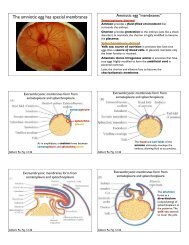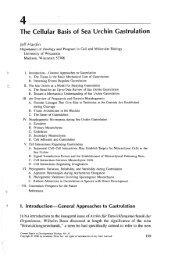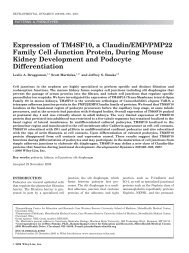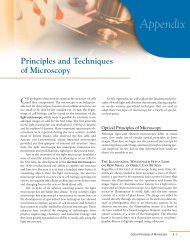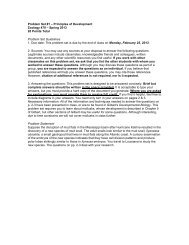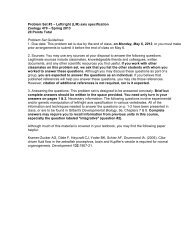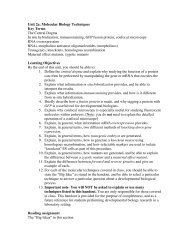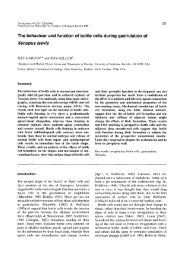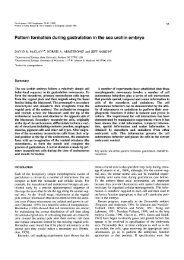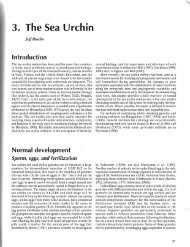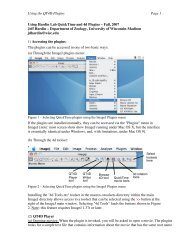EPIGENETIC SIGNALS AT GASTRULATION IN TIIE SEA URCHIN ...
EPIGENETIC SIGNALS AT GASTRULATION IN TIIE SEA URCHIN ...
EPIGENETIC SIGNALS AT GASTRULATION IN TIIE SEA URCHIN ...
Create successful ePaper yourself
Turn your PDF publications into a flip-book with our unique Google optimized e-Paper software.
252 McClay et aI.<br />
cells in the vegetal plate prior to invagination becomes resolved into a line of<br />
cells along the length of the archenteron (Figure 1) (Wray, 1987; Hardin,<br />
1989). These data show that archenteron invagination begins with a series<br />
of directed cell rearrangements. The mechanism(s) responsible for the cell<br />
rearrangement and for the directed cell movements are unknown. It is<br />
known, however, that isolated endoderm cells become motile at the<br />
beginning of archenteron formation (McClay, 1986; J. Hardin, unpublished<br />
observations). Whether this motility is important for the cell rearrangements<br />
and/or for the invagination remains to be shown.<br />
-<br />
early mid late quiescent<br />
FIGURE 1. Stages in archenteron elongation. As the archenteron<br />
elongates, the number of cells around the circumference steadily decreases,<br />
and labeled patches of cells narrow and lengthen. Late in gastrulation,<br />
filopodia extend upward, pulling on the archenteron to complete its<br />
elongation. Upon reaching the "target" region the filopodia cease their<br />
activity.<br />
The latter part of archenteron formation is the responsibility of the<br />
secondary mesenchyme cells (SMCs), which appear to pull the archenteron<br />
through the fmall/3 to 1/2 of its elongation phase. The SMCs extend<br />
filopodia that reach to a final length of about 30-35 11m. By attaching to the<br />
wall of the blastocoel and contracting, it is presumed that the fllopodia pull<br />
the archenteron to its final length. In support of this hypothesis, if filopodia<br />
are ablated the archenteron does not extend beyond about 2/3 its fmallength<br />
(Hardin, 1988). Also, in exogastrulae the archenteron extends to about 2(3<br />
its final length, but then can extend no further (Hardin and Cheng, 1986).<br />
Thus, the final sequence of archenteron elongation requires SMCs which<br />
use filopodial contraction to stretch the archenteron to its final length.<br />
Observation of filopodial behavior showed that SMCs extended<br />
filopodia during much of gastrulation. At the end of gastrulation filopodia!<br />
extension ceased rather quickly when a putative target region was reached at



